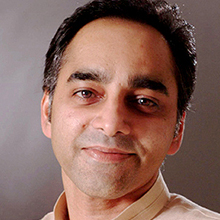Seeds of Hope/Destruction
by manaser
This work has been commented by 2 curator(s). Read the comments
Title
Seeds of Hope/Destruction
Headline
Hybrid seeds and farmers of Bangladesh
Concept author(s)
Mohammad Naser
Concept author year(s) of birth
1985
Concept author(s) contribution
Script, photographer and video
Concept author(s) Country
Bangladesh
Friendly Competition
Competition category
Visual communication practice
Competition subcategory
moving
Competition field
academic
Competition subfield
student
Subfield description
Pathshala
Check out the Food Democracy 2013 outlines of Memefest Friendly competition.
Description of idea
Describe your idea and concept of your work in relation to the festival outlines:
Hybrid rice seed was introduced in Bangladesh in late 90’s. Since then, it has incurred a lot of debates. Hybrid seed is exalted for its higher yield than the local varieties, but in the expense of environmental, economical and political impacts. Hybrid seeds are non-reproducible in a sense that seeds from previous harvest produce very poor yield precluding farmer to save seed from previous harvest. Hence, the farmers are forced to purchase commercial seed each time they cultivate. Small farmers struggling with extremely low market prices for their products cannot possibly afford to purchase expensive hybrid seeds year after year. Finally they succumb to the industry controlled by a handful of agrochemical companies. This shift of ownership proved to be devastating when the seed selling companies refused to pay any compensation for the crop failure caused by the seeds imported (or produced) by them. The situation has gotten worse when the government eliminated several crucial restrictions on importing hybrid seeds. Without proper testing those seeds got into the field and caused diseases, which in turn ruined farmers.
Moreover, hybrid seed has environmental impacts such as destruction of local varieties and threatening biodiversity, water pollution and soil degradation. By spreading the use of monocultures, hybrid seeds eliminated the use of thousands of varieties of rice. There were more than15,000 rice varieties at the beginning of twentieth century, whereas only 8,000 are available now in the Bangladesh Rice Research Institute (BRRI). Hybrid seed usually requires a significant amount of fertilizers, pesticides and water. Heavy dependence on fertilizer and other agricultural chemicals caused widely documented environmental damages. Additionally, the increased dependence on irrigation has depleted aquifers. And all these effects, in turn, victimized the farmers economically.
This work portrays the hardships of the farmers as they produce rice. The story depicts their work throughout the whole process of rice production; from preparing land to collecting the harvest. It also focuses on the issue of research on hybrid seeds. The purpose is to show the relationship between the bioengineered seeds and the people directly affected by it. These poor farmers are absolutely defenseless against authorities’ cyclopean perception and commercial seed and chemical companies’ insatiable greed. This work aims to provide the government, NGOs, companies, researchers, activists, consumers and farmers a common platform for discussion through which sufferings of the farmers may be alleviated.
What kind of communication approach do you use?
Multimedia and/or photography
What are in your opinion concrete benefits to the society because of your communication?
Most people, especially the consumers have no idea the issues related to the food they are eating. There is a very little concern about GMO crop as well. Through my work I want to raise awareness towards such issues.
What did you personally learn from creating your submitted work?
Like other people, I had no idea what's going on in the food industry or what I was eating. During this work, I had to talk to researchers, activists, teachers, bio-engineers, photographers through which I got better understanding about hybrid and GMO seeds. I have watched documentaries, read articles, saw works of other photographers and came to learn about issues like food sovereignty, seed piracy, GMO crop, Golden Rice etc.
Why is your work, GOOD communication WORK?
It's more interactive in nature. The audio visual nature of my work may convey messages better than if only images or write-ups were used instead.
Where and how do you intent do implement your work?
Show it to researchers, law-makers, consumers and raise awareness about hybrid seeds and GMO crops.
Did your intervention had an effect on other Media. If yes, describe the effect? (Has other media reported on it- how? Were you able to change other media with your work- how?)
Have not published it yet.
Curators Comments

Scott Townsend
There are a number of reasons that this work is successful. The first aspect is that the story is clearly communicated- it relies on traditional ideas of interviews to broaden the discussion so that it is less one individual's editorial response or opinion. Secondly, it is 'sited' in a particular context rather than talking generally about the industrial marketing strategies of Monsanto. Additionally, the format is highly 'fungible' in the sense that it can be disseminated through any number of sources- broadcast, narrowcast, Internet, etc. which is an important aspect to engaged activism.
The production qualities are excellent. While professional production issues have become less emphasized due to the ubiquity of quick video and still captures from mobile devices connected to the Internet, it helps the video in being competitive with other professionally produced work that it might be shown with in a daily cycle of broadcast TV. The still photography is aesthetically beautiful, however this might be an issue to consider. It helps to show the photography in context to the story line of the video, however, the highly developed aesthetics in it may distance the viewer from the actual concrete experiences of the people that are being portrayed. This is a real dilemma for documentary work in general.
It would be great to see this developed further and expanded on.

Shoaib Nabi
Mohammad Naser, I admire your dedication to this cause and the research you have placed to bring this video to us. A very sound body of work based on facts.
"Farmers are forced to purchase commercial seed each time they cultivate. Small farmers struggling with extremely low market prices for their products cannot possibly afford to purchase expensive hybrid seeds year after year. Finally they succumb to the industry controlled by a handful of agrochemical companies." This is a worldwide reality that need exposure through debates and united nation forums. NGO's have limited means but can certainly do their job.
I certainly would like to know how your work is received once it is shared with those you may seek help to advocate the cause. I am a bit skeptic that many law makers and politician have vested interest hence a conflict may arise. You have to find more aggressive means and seek help of local TV channels, talk shows or town meeting to share your video. Also you can promote the video in festivals - certainly in the past documentaries on social issues have made headlines and risen debates and receive the attention they deserve.
Don't stop here please. All the very best.

10 years, 9 months ago
As a matter of fact, I am excited not because my work got selected among many for a competition, but for the platform the work is getting which it rightfully deserves. Right now, the situation is even tensed because of the BT Brinjal which is genetically modified (GM) crop. Last month, government owned Bangladesh Agricultural Research Institute (BARI) (which has been working with Monsanto collaborator MahyCo) has applied to the agriculture ministry for its use at the growers’ level without any research on the impact on human health. It caused tension and writ petition in the High Court by an NGO. Nevertheless, most of the mass media (with some exceptions) are projecting only the health-hazard part, completely ignoring the farmers' issue. Hence, I feel that the issue with the farmers should also be presented in some alternative media, if not the usual one.
My special thanks to the judges and reviewers for their insightful comments which will definitely help shape the work in future. See you all in the workshop.